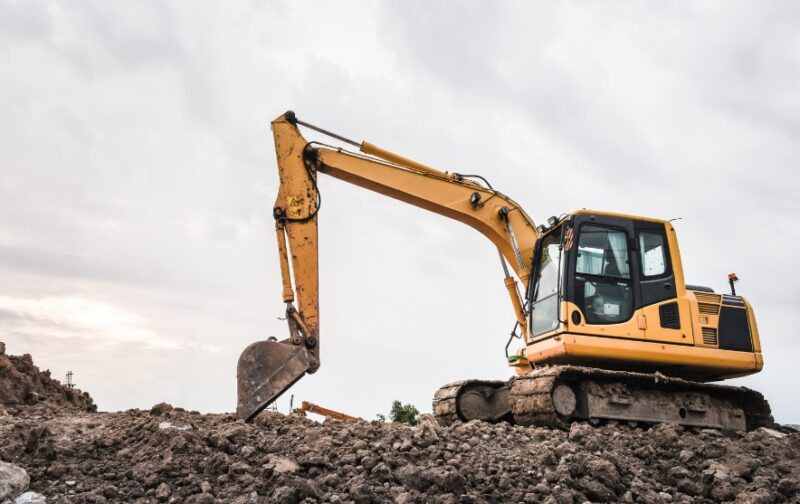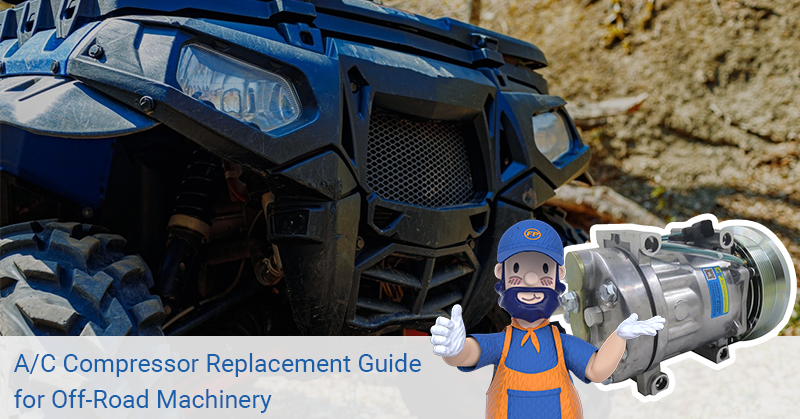When it comes to excavators, we often associate them with dust and dirt, because they frequently operate in dusty environments, carrying heavy loads. Regularly adding hydraulic fluid to the excavator ensures the proper functioning of the hydraulic system and allows for the smooth operation of the machine.
Adding hydraulic fluid to an excavator is an important yet straightforward task. However, beginners may feel frustrated when attempting it for the first time. Here, we provide you with an easy-to-understand guide to help you complete this task.
Common Signs of Hydraulic Fluid Shortage
Identifying these signs of hydraulic oil shortage promptly can reduce wear and aging of equipment parts, and improve operational safety. The following are some common signals that will draw your attention:
- Abnormal rise in hydraulic system temperature.
- Slower response speed and less agile movements when using an excavator for a project.
- Insufficient power for the excavator to complete normal work tasks.
- Abnormal noise from the hydraulic system during operation, usually cavitation noise caused by the pump running empty.
- Inconsistent hydraulic cylinder movement, such as irregular or intermittent behavior.
If you notice these signs, it means there is a shortage of hydraulic oil, and you need to check and refill it promptly. Importantly, when adding, please do not forget the following considerations.
Things You Must Do before Adding Excavator Hydraulic Fluid
Before starting, make sure your excavator is firmly parked on a solid, flat surface and that the temperature of the hydraulic system has dropped to a safe operating range. Following the manufacturer’s instructions, position the boom and bucket to the designated locations for proper reading of the hydraulic tank level. Make sure the hydraulic oil level is between the minimum and maximum marks on the oil sight glass.
Related read: Excavator Hydraulic Fluid 101: Have To Know These Things
Check Your Current Hydraulic Oil Levels
Some excavators may have a digital display or indicator light to show the level of the hydraulic oil.
Some excavators may have a hydraulic oil level indicator inside the cab that shows the hydraulic oil level through a dashboard or display on the console. Some excavators may require you to check the hydraulic oil level by opening the hydraulic tank cap and observing the oil level directly.
Therefore, you can find the hydraulic oil inspection method for the corresponding model by referring to the excavator’s operation manual or consulting the manufacturer.

How to Add Hydraulic Fluid to the Excavator
To ensure the smooth operation of your excavator working in dusty conditions, it is important to add hydraulic fluid to the excavator. Now, let’s review the correct steps for adding hydraulic fluid:
Prepare the correct hydraulic fluid
If you’re unsure about the type of hydraulic fluid, refer to the excavator’s user manual or manufacturer specifications to ensure you use the correct type and specifications. Avoid mixing different types of hydraulic fluids or using fluids intended for other excavator models.
Locate the hydraulic oil tank and fill the port
The hydraulic oil tank is typically located at the rear of the excavator, near the hydraulic pump. The fill port is usually situated on the top of the hydraulic oil tank. The tank is a rectangular container with a significant capacity. Remove the top fill cap and clean the fill port with a cloth to ensure it is free from dirt or debris.
Clean the work area
Before adding hydraulic fluid, ensure the area around the work site is clean to prevent impurities or dirt from entering the hydraulic system.
Check the fluid level
Maintaining the proper hydraulic fluid level is crucial for the smooth and efficient operation of heavy machinery. Locate the hydraulic oil tank and use the dipstick or sight gauge on the side of the tank to check the fluid level. If the level is low, proceed to the next step. If the level is already full, do not add more fluid.
Add hydraulic fluid
Open the top cap of the hydraulic oil tank and slowly pour in the hydraulic fluid, being careful not to overfill. If necessary, use a funnel to avoid spills.
Check for leaks
After adding hydraulic fluid, inspect the excavator for any signs of leaks, such as hydraulic fluid traces near the machine. This is crucial. If any leaks are detected, address them immediately to prevent further damage. Pay attention to any unusual sounds or movements when filling the hydraulic fluid level.
Ensure optimal fluid level
Double-check the fluid level to ensure it is at the appropriate level. This is a critical step, so do not skip it!
Replace the cap
Once you have added the hydraulic fluid and completed the necessary checks, securely close the cap on the hydraulic oil reservoir.
Start the excavator
Start the excavator and allow the hydraulic system to run for a few minutes to circulate the new hydraulic fluid. Check the fluid level again. Your excavator will appreciate it!
By following the above steps, you will be able to maintain your equipment effectively and safely.
Safety Precautions When Adding Hydraulic Fluid
- If there is a suspected leak, do not use your hands to search for the leak along hydraulic hoses or components. Instead, use tools such as mirrors to identify potential leaks and avoid the risk of fluid injection injuries.
- When adding hydraulic fluid, ensure you wear appropriate personal protective equipment, such as goggles and gloves. This will protect you from contamination by hydraulic oil and other potential hazards.
- Adding hydraulic fluid involves manual operations, such as lifting and carrying hydraulic oil containers. Exercise extra caution during these tasks to prevent accidents.
- Maintain active communication with those around you while adding hydraulic fluid. This ensures that everyone is aware of the current work status and safety precautions.
- When inspecting hydraulic fluid, make sure the machine is in a shutdown state. The potential injuries caused by operating machinery can be unpredictable.
- Take appropriate measures to confirm the fluid level. Do not rely on visual estimates or poor lighting conditions to determine the hydraulic oil level. For example, remove the hydraulic oil cap from the reservoir for inspection. Ensuring the correct hydraulic fluid level is an important step in routine maintenance.
- These safety precautions also apply to inspecting and replacing hydraulic fluid.
Conclusion
Adding hydraulic fluid to an excavator is an important task, and beginners may be more cautious. And knowing the signs that you need to add more is important to keep your equipment working efficiently. Besides, maybe you can consider preparing some excavator parts related to the hydraulic system to be replaced in time. Always prioritize safety, and with proper precautions, you can refer to the above guidelines and user manual to add hydraulic fluid to the excavator, which will be of great help. If you are an experienced individual, consider adding hydraulic fluid as a regular task to prevent unexpected failures. Get started and good luck with your endeavor.







[…] Regardless of what you use or if you are looking for alternative excavator hydraulic fluid, you can find inspiration here. Consulting manuals and seeking advice from professionals is a wise choice to ensure they meet your system’s requirements and do not cause any harm or damage. If you intend to attempt hydraulic oil replacement in your excavator, please refer to this guide: How to Add Hydraulic Fluid to Excavator (Beginner Recommended). […]